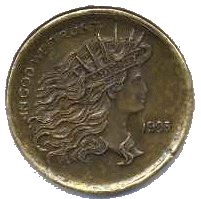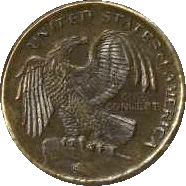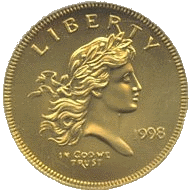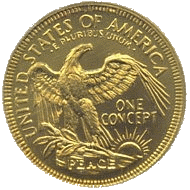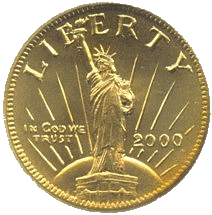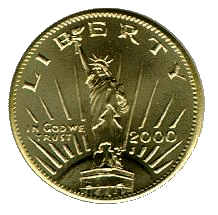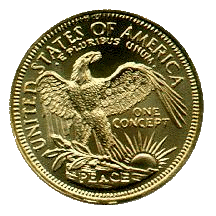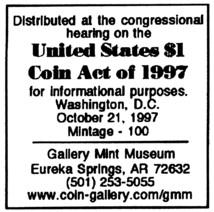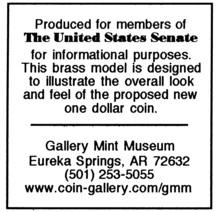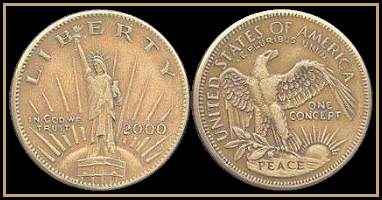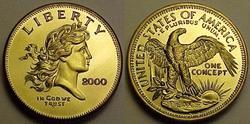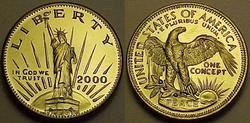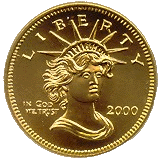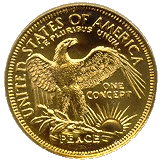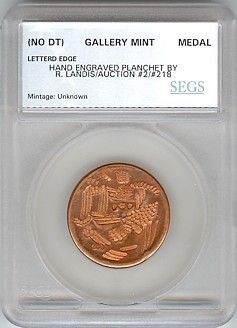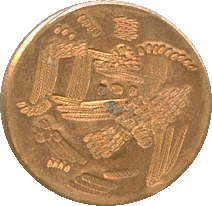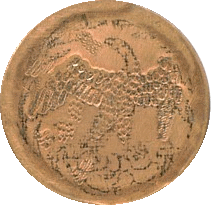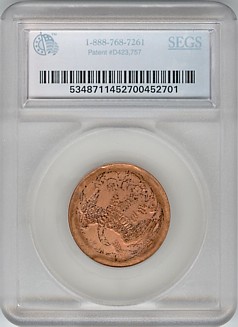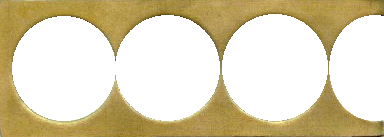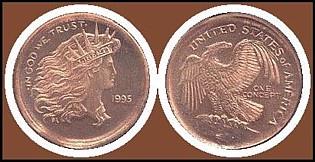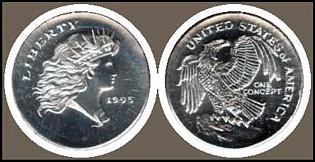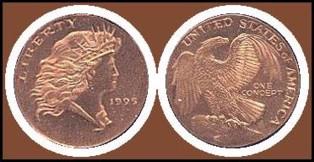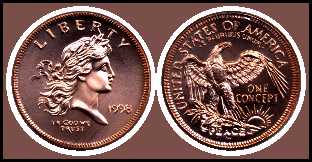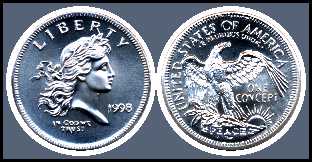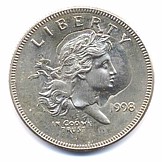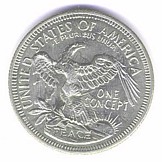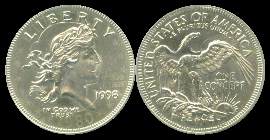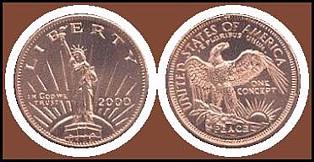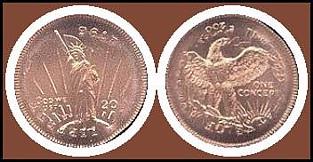1995
Concept Dollars
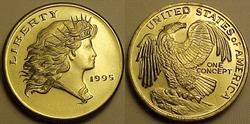
CLICK TO VIEW LARGER IMAGE
(Photo courtesy of
Cliff Bolling)
Before the movement in
the early 1990's could die, the Gallery Mint, a private
mint in Eureka Springs, Arkansas, picked up the ball and
ran with it. There is probably no single person in
America that had more influence on the eventual striking
of a new golden dollar coin than Ron Landis, the Gallery
Mint's chief engraver. The Gallery Mint began with
striking 1995 dated golden color "One Concept"
pieces. There were 1,371 of the 1995 "One
Concept" dollars struck and sold to patrons of the
Gallery Mint. They have a lettered edge that reads
"* IN GOD WE TRUST * E PLURIBUS UNUM".
It was discovered in the Summer of 2001 that these pieces were struck in both "coin die alignment" and in "medal die alignment". It is by no means conclusive, but it appears that the "medal die alignment" pieces are much rarer than the "coin die alignment" pieces. The die alignment is determined by rotating a coin on its north-south axis. If the reverse is then "upside down", it is a coin die alignment. If it is "right side up" it is a medal die alignment. Or, you can compare the die alignment with a United States coin. United States coins, as with most legal tender coins of the world, are struck in coin die alignment, hence the name. The biggest majority of tokens and medals are struck with medal die alignment.
